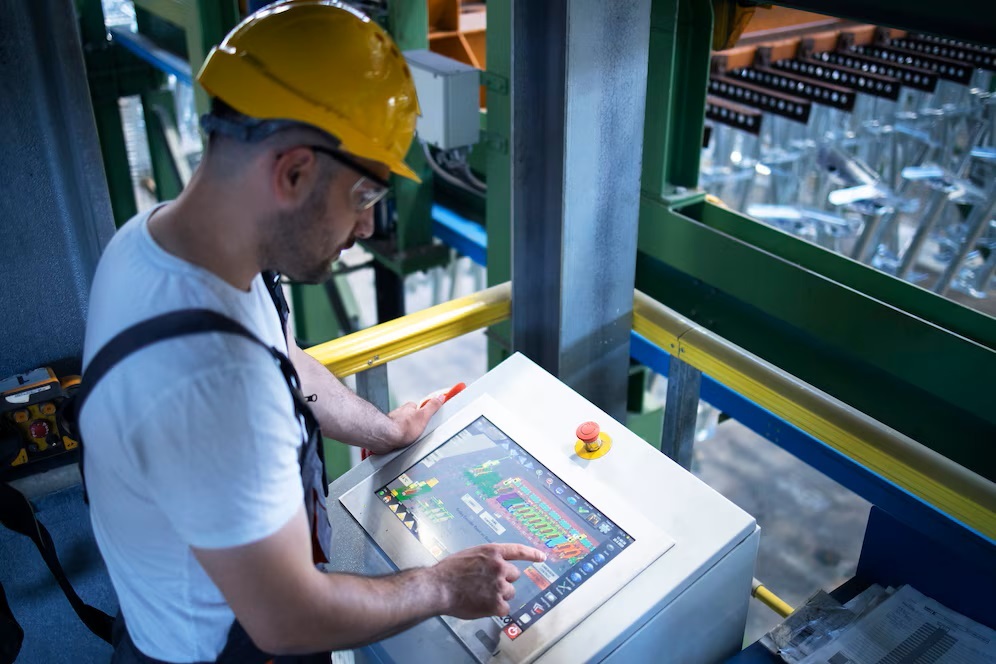In today’s fast-paced industrial world, unplanned machine breakdowns can be a nightmare. They halt production, waste resources, and cause significant financial losses. That’s where predictive and prescriptive maintenance come into play. These advanced industrial monitoring solutions are revolutionizing how companies care for their equipment.
The Evolution of Maintenance
Gone are the days when companies fixed machines on a set schedule, regardless of their condition. This old-school approach, known as time-based maintenance, often led to unnecessary work and costs. Next came condition monitoring, where technicians checked machines to see if they needed repairs. This was better, but it still relied heavily on human expertise.
Today, we have predictive and prescriptive maintenance, the superheroes of industrial monitoring solutions. These methods use smart technology to understand machines in ways we never could before.
What is Predictive Maintenance?
Predictive maintenance is like having a precious monitoring solution for your machines. It uses sensors to monitor things like vibration and temperature, then applies advanced analytics to spot patterns and predict future problems.
Example: Imagine a motor in a factory. A vibration sensor might detect a slight misalignment. The predictive system then warns, “This motor will likely fail in about three months.” This early warning allows managers to plan repairs before a breakdown occurs.
Benefits of Predictive Maintenance:
- Fewer surprise breakdowns
- Better planning for repairs
- Cost savings from avoiding major failures
What is Prescriptive Maintenance?
If predictive maintenance tells you what will happen, prescriptive maintenance tells you what to do about it. It’s the next level in industrial monitoring solutions. Prescriptive maintenance takes data from predictive systems and uses Artificial Intelligence (AI) and Machine Learning to suggest the best actions.
Real-World Success: ThyssenKrupp’s Smart Elevators ThyssenKrupp, a leading elevator company, shows the power of prescriptive maintenance. Their system not only predicts a door will fail in five days but also lists the four most likely causes. This detailed guidance helps technicians fix issues on the first visit over 90% of the time. The result? Happier customers and significant cost savings.
The Magic of “What-If” Scenarios
A unique feature of prescriptive maintenance is its ability to provide options. It might say, “Slow the machine by 50% to double its remaining life.” This advice is incredibly handy when a needed part is out of stock. Managers can choose the best plan based on factors like safety, cost, or productivity.
Predictive vs. Prescriptive: Key Differences
Action Required:
- Predictive: Says “A problem is coming.” Managers must decide what to do.
- Prescriptive: Says “Do this to fix it.” It can even create work orders automatically.
Problem-Solving:
- Predictive: Spots risks that need action.
- Prescriptive: Provides multiple solutions and their outcomes.
Decision-Making:
- Predictive: Humans analyze data and decide.
- Prescriptive: AI suggests best actions, humans choose.
Why This Matters for Everyone
You might think, “I don’t run a factory. Why should I care about these industrial monitoring solutions?” Well, they influence us all more than you might realize:
- Safer Products: Well-maintained machines are less likely to malfunction, which means safer goods for consumers.
- Lower Prices: When factories run more efficiently, they can often offer products at better prices.
- Greener World: Better maintenance reduces waste, energy use, and the need for replacements, making industries more environmentally friendly.
The Road Ahead
Predictive and prescriptive maintenance are still in their early stages, especially prescriptive technology. As AI gets smarter, these industrial monitoring solutions will too. They’ll understand more complex issues, adapt to new situations, and maybe even learn from other industries.
Some companies are already using cloud-based prescriptive programs, making it easier for experts to help from anywhere in the world. Others are integrating these systems with quality control and engineering data for even better insights.
The shift from predictive to prescriptive maintenance is more than a tech upgrade—it’s a new way of thinking. Instead of just foreseeing problems, we’re now getting tailored solutions. This approach means less downtime, higher productivity, and more profitability.
For any business with machines, from small workshops to giant factories, these industrial monitoring solutions are game-changers. They turn maintenance from a guessing game into a precise science. As this technology grows, it will make our industries smarter, our products better, and our world a little bit greener. That’s the promise of predictive and prescriptive maintenance—not just fixing machines, but improving life for all of us.




